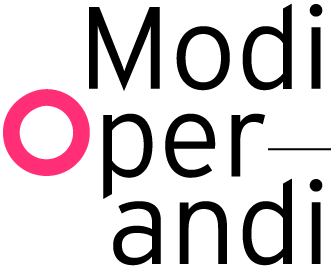THE AGENTS OF PLAY
Based on this logic the chart below can be constructed.
| Phrase | Agent | Agency | Type of architectural action |
| Play of architecture | Architectural construct | Play of the architectural construct | Operation |
| Architecture of play | Creator-player (architect) | Play of the architect | Creation |
| Play in architecture | ‘User’-player | Play of the ‘user’ | ‘Reception’ |
| Architecture in play | A: Architectural construct B: Creator-player: the architect |
A: Play of the architectural construct B: Play of the architect |
A: Operation B: Creation |
Regardless of their respective particular differences and overlaps, these four linguistic constructs connote the question of agents and agency. At first glance they imply the dominant human and non-human agents in relation to the initiation, activation, and sustaining of play in relation to architecture.
Generically speaking ‘an agent is a being with the capacity to act, and “agency” denotes the exercise or manifestation of this capacity’.[2] Many contemporary debates which are formed around the notions of agent and agency were in response to the question of intentionality in relation to the agent’s actions. Following Aristotle and Hume for some thinkers—such as Elizabeth Anscombe and Donald Davidson—the term agency denotes ‘the performance of intentional actions’ while this view has been criticized by many others who ‘argue that the exercise of agency may be entirely spontaneous, in the sense that an agent may initiate an action for no reason and without prior intent’.[3] The critique of reducing the notion of agency to human will and intentionality can be traced in the works of Brian Massumi and Jane Bennet, amongst others.[4] The problem of an agent’s relation to intentionality is a philosophical question which remains untouched here. An agent is simply the body that activates a force intentionally or non-intentionally which can be human or non-human, and agency is the condition of manifestation of such forces.
Recently, as a response to the over-rationalization and commercialization of architectural practice, the notion of play has become a recurrent topic through which architectural theoreticians, practitioners, educators, and students challenge such issues. Generally speaking, the body of research which exists on the subject of the relation between architecture and play can be categorized in two distinct approaches:
The first category of approaches considers play as a mode of creation or designing where the architect is the agent of play (i.e. architecture of play and architecture in play, where in implies through). This approach is common in architectural education, especially in experimental design studios where play becomes a methodological approach through which the students can overcome the conventions of designing. A study in this category is the 2013 book Interpretation in Architecture: Design as a Way of Thinking by Richard Coyne and Adrian Snodgrass. Other examples in this category are studies which take gaming as a method for designing, where the rules of the game—and not play—are predefined and the participants play the game to achieve a final outcome. An example is Ekim Tan’s PhD thesis Negotiation and Design for the Self-Organizing City: Gaming as a Method for Urban Design. These approaches may become problematic if they tend to instrumentalize play in order to achieve goals beyond playing itself, which is contradictory to a quality of play. Play’s intention comes from within. Moreover, the predefined rules may limit the unpredictable outcomes if they are not chosen sensitively to the indeterminacy of play which is its other quality.
The second category of approaches considers play as a mode of ‘usage’ of space where the ‘user’ is the agent of play (i.e. play in architecture). This approach is the most common approach towards the notion of play in architectural discourse, one which results to or is resulted from the conventional understanding of a playground and is highly problematic. A conventional playground is a place which provides the facilities for playing and where playing is still using. One example of this approach is the 2007 book The Ludic City: Exploring the Potential of Public Spaces by Quentin Stevens. Stevens analyzes the appearance of different accepted types of play such as skating, public performances, etcetera, in the urban space. He explores the typologies of spaces in the city where these activities are more likely to happen.
As it turns out, the notion of play has been barely studied in relation to the operationality of architecture, where architecture is the active agent and play is the active operation of an architectural construct: i.e. the play of architecture and architecture in play—architecture in the state of playing.
I would like to propose a hypothesis, one which I elaborate further in detail in my PhD thesis, namely that the deficiencies of each of these approaches may be the result of the fact that they have been done in isolation. In fact, the liminality of play teaches us that play of architecture, is not so separate from architecture of play, play in architecture, or architecture in play.
